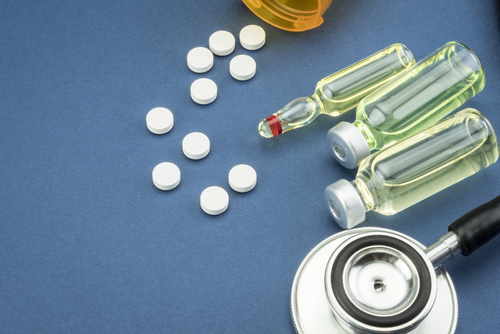Effectiveness of Gilenya and Tecfidera Compared in Real-World Study in Italy

Gilenya (fingolimod) and Tecfidera (dimethyl fumarate) are equally effective as first-line treatments in people with relapsing-remitting multiple sclerosis (RRMS), but Gilenya may be of slightly more benefit to those who switch from a previous injectable therapy, according to a real-world study of patients in Italy.
The study, “Fingolimod vs. dimethyl fumarate in multiple sclerosis, A real-world propensity score-matched study,” was published in the journal Neurology.
Gilenya (marketed by Novartis) and Tecfidera (marketed by Biogen) are two disease-modifying therapies approved to treat RRMS.
Researchers retrospectively analyzed data from RRMS patients collected between 2011 and 2017 at seven MS outpatient clinics across central Italy.
In total, data from 275 patients treated with Gilenya and 275 patients treated with Tecfidera were analyzed.
Have you tried either of these drugs? share your experience with others in the MS Drugs forum!
Patients were divided into two groups: those who received Gilenya or Tecfidera as a first MS therapy (treatment-naive group; 170 patients), and those who switched to either Gilenya or Tecfidera after using self-injectable MS therapies (switchers group; 380 patients).
Researchers appraised treatment efficacy based primarily on indications of “no evidence of disease activity status 3,” or NEDA-3; this is a combined measure that takes into account evidence of relapses, disability worsening, and new lesions seen on imaging scans.
Results showed that, at a median follow-up of 18 months, the number of patients achieving NEDA-3 was statistically similar in both Gilenya and Tecfidera treated groups — 73% and 70%, respectively.
Subgroup analysis showed the two medications to be of comparable effectiveness in treatment-naive patients.
Among switchers, however, a higher number of patients in the Gilenya group achieved NEDA-3 status (72%) compared with the Tecfidera group (68%). The researchers hypothesized that the study’s short follow-up duration (18 months) may have influenced this outcome.
Three percent of all patients being treated with Gilenya, and 6 percent of those taking Tecfidera dropped out of the study due to treatment-associated adverse events. Their data were not included in the study.
The team highlighted that the study has certain limitations imposed by the small number of patients and lack of randomization. Also, Gilenya was approved in 2011 in Europe, four years before Tecfidera (2015), resulting in patients being treated with each drug at a different time during the study period.
Nonetheless, the team concluded: “We found no significant difference between FNG [Gilenya] and DMF [Tecfidera] on NEDA-3 status, while subgroup analyses suggest the superiority of [Gilenya] over [Tecfidera] in patients switching from self-injectable drugs.”
While their work “should be considered only hypothesis generating,” the researchers added, “our findings may provide additional information to help neurologists in selecting the most appropriate treatment according to different stages of disease.”






